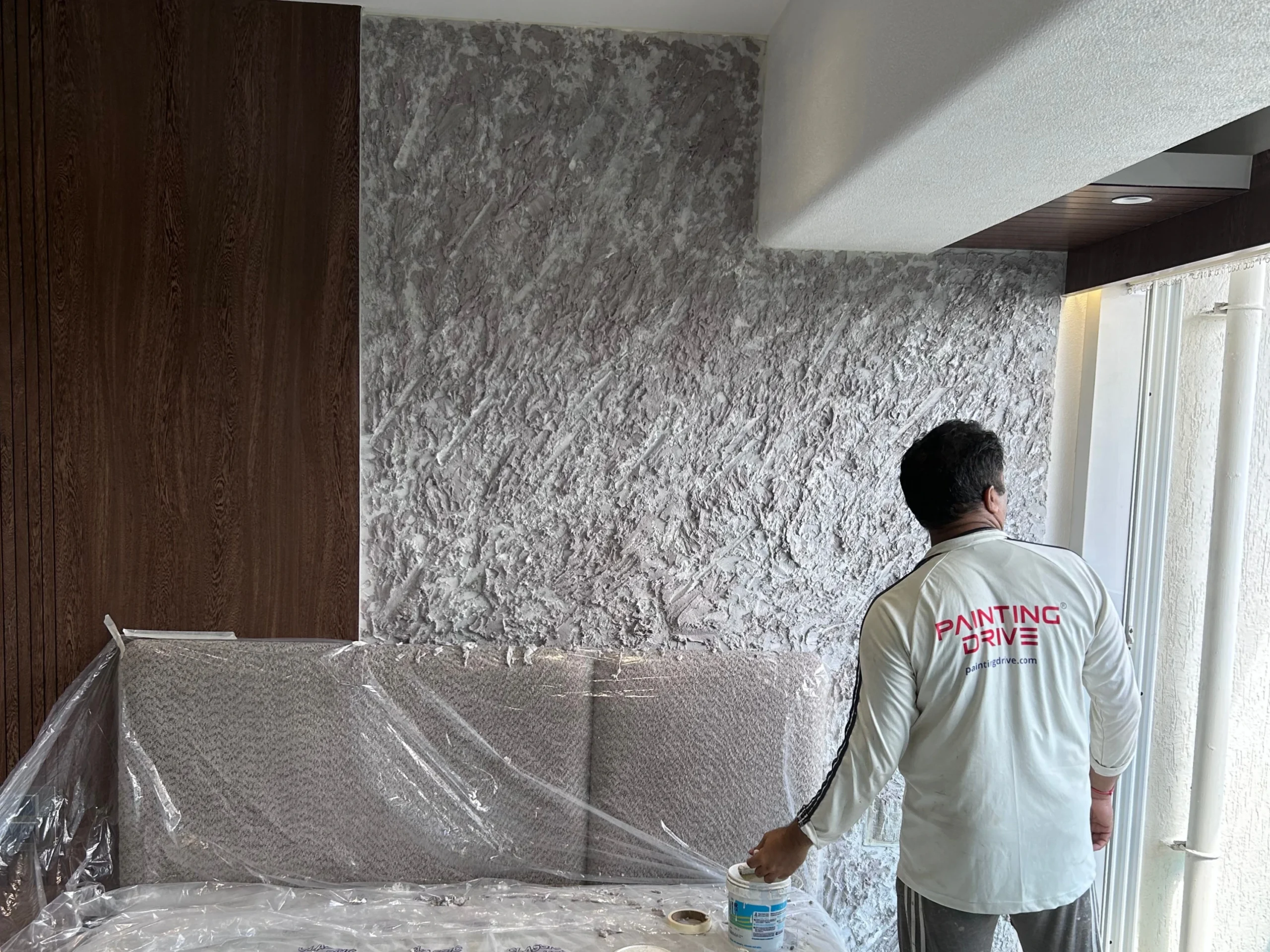Textured walls offer a dynamic alternative to flat paint, adding depth, character, and visual interest to interior spaces. They can also effectively conceal minor imperfections on the wall surface, providing both aesthetic and practical benefits.
Common Textured Wall Finishes
Subtle Textures
- Orange Peel: This texture resembles the dimpled skin of an orange, featuring a fine, consistently bumpy surface. It is typically applied using a sprayer and is valued for its ability to hide minor flaws while being relatively easy to clean.
- Knockdown: Created by spraying a texture material (like joint compound thinned with water) onto the wall and then gently "knocking down" the peaks with a wide knife or trowel once partially set. This results in a more varied, slightly flattened, and less uniform pattern than orange peel, offering a subtle rustic or mottled appearance.
More Pronounced Textures

- Skip Trowel: This technique involves applying joint compound with a trowel in a skipping motion across the surface. The trowel is held at a slight angle, causing it to skip and leave behind a random, layered pattern of raised, stucco-like areas interspersed with smoother sections. It provides a distinct, often Mediterranean or rustic, look.
- Slap Brush / Stomp: This texture is achieved by dabbing, slapping, or "stomping" a stiff-bristled brush (often a double crow's foot or stomp brush) onto wet joint compound. This action creates various patterns, frequently fan-like, sunburst, or circular, depending on the brush and technique. The intensity and definition of the texture can vary.
- Sand Swirl: Achieved by mixing sand with primer, paint, or a perlite-based mud, and then applying it to the wall in a swirling or circular motion using a brush or trowel. This creates a continuous, flowing pattern of fine to medium texture with visible arcs.
Artisanal and Modern Finishes
- Limewash: A traditional, breathable finish made from limestone putty that has been slaked. Limewash penetrates the surface and cures to create a soft, matte, and subtly variegated appearance with a unique chalky depth. It is currently experiencing a resurgence in popularity for its sophisticated, earthy, and artisanal aesthetic.
- Venetian Plaster (Italian Plaster): This luxurious finish involves applying multiple thin layers of plaster, typically made from lime putty and marble dust. The layers are burnished to create a smooth, highly polished surface with the look and feel of natural stone, such as marble or travertine. It offers a sophisticated, artisanal, and often opulent appearance, ideal for statement walls.
- Smooth Textured Paint: For a contemporary and refined effect, paints with added fine aggregates (like sand, silica, or synthetic particles) or specialty finishes can create subtle, tactile textures. Options include finishes that mimic the look of smooth stone, suede, or even a subtle marble texture paint, catering to modern design preferences for a sleek yet dimensional surface.
Choosing the Right Texture
Selecting an appropriate wall texture involves considering the overall design style of the space (e.g., modern, rustic, traditional), the desired level of visual impact, and the room's lighting, as texture interacts significantly with light and shadow. Practical aspects such as durability, ease of cleaning, and the complexity of application or future repairs are also important. For instance, smooth or very fine textures like those from specialized paints suit modern aesthetics, while finishes like Limewash or Venetian Plaster can impart a unique, handcrafted, and sophisticated feel to a variety of interior styles.










